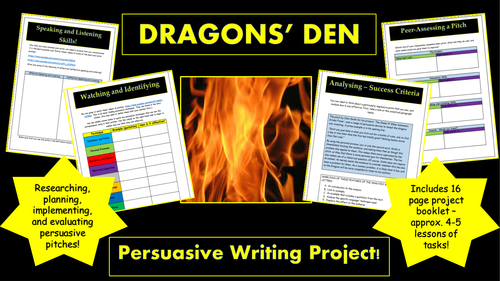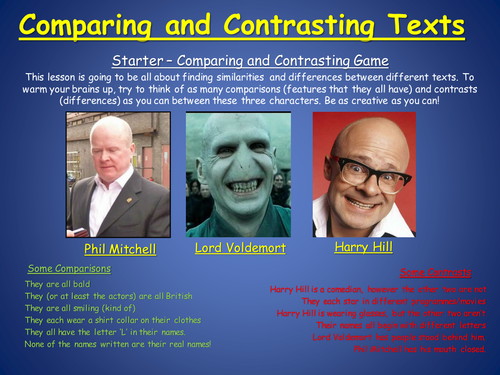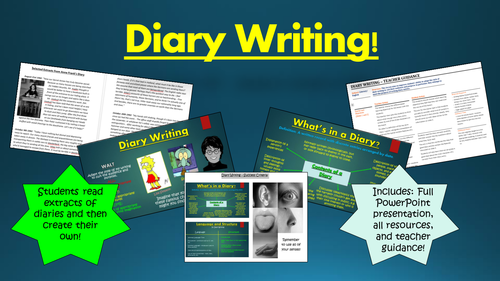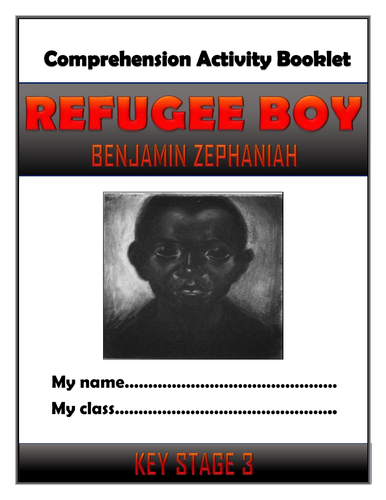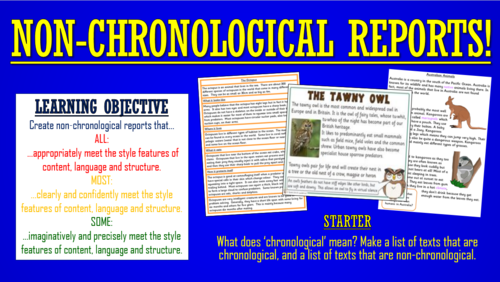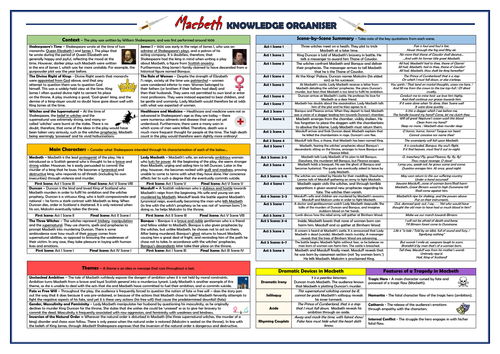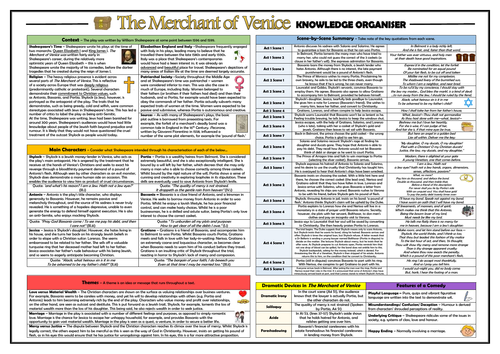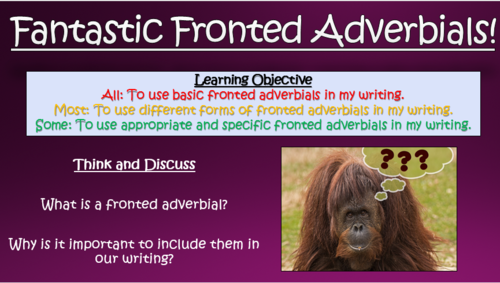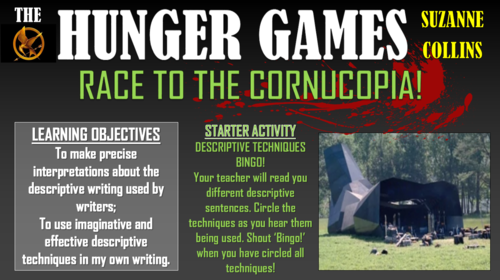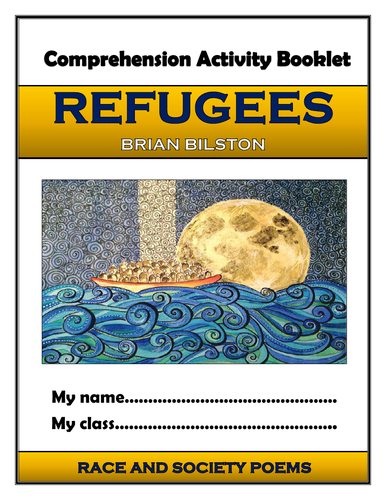
3k+Uploads
1919k+Views
2247k+Downloads
English language arts

Dragons' Den Persuasive Project! (Building Speaking & Listening and Persuasive Writing Skills!)
This resource is perfect for enabling students to build both their persuasive writing and their speaking and listening skills. Based upon the popular BBC series 'Dragons' Den', students have the opportunity to research, design, pitch, and evaluate arguments for their own inventions, whilst simultaneously analysing persuasive pitches, revising persuasive techniques, structuring arguments and articulating convincingly.
Included is a 16 page booklet (I would say at least 4-5 hour lessons of tasks) that lead students to:
- Introduce themselves and their interests;
- Watch persuasive pitches (links included) and identify persuasive devices;
- Analyse why persuasive devices are effective;
- Structure an analysis appropriately;
- Brainstorm ideas for an invention using imagination and helpful aiding questions;
- Formulate an argument by considering key questions and counter arguments;
- Write and present a persuasive pitch;
- Peer-evaluate and self-evaluate persuasive pitches.
I have also provided some examples of news stories featuring the worst and best pitches from the den, in order to provoke discussion about what makes a strong pitch.
All images are licensed for commercial use and are cited throughout.

New GCSE English Language - Comparing and Contrasting
This informative and engaging double lesson aims to improve students’ ability to compare and contrast two different texts based on a similar subject. They will focus particularly on the purpose, audience, language, and structure of texts, and will learn to use comparing and contrasting connectives to highlight any similarities and differences. This has always been a crucial skill in English, but has an increased importance in the new GCSE for English Language, as there is a greater requirement for students to be able to make links and comparisons between texts.
The lesson follows a clear and logical learning journey, with students learning to:
- Understand the key terms 'compare' and 'contrast', and the importance of these skills in English;
- Categorise the different features that they can compare, under the headings 'Purpose', 'Audience', 'Language' and 'Structure;'
- Read (and identify the key features within) two morally and ethically intriguing texts, offering diverse views of young people in the media;
-Compare the two texts, using a clear and concise template, and newly-acquired knowledge of different types of connectives;
- Peer-assess each other's comparative essay attempts.
Included in this resource pack are:
- Whole double lesson, colourful and engaging PowerPoint presentation (Including assessment for learning referral slides)
- Cards for card-sorting activity;
- Two interesting and thought-provoking non-fiction media extracts (one a newspaper extract from The Evening Standard, and another a persuasive leaflet, both focused on the issue of how young people are perceived.)
- Template for main comparative analysis task;
- Full teacher guidance plan.
All images are licensed for commercial use and are cited on the final slide of the PowerPoint presentation

Diary Writing!
This stimulating and informative lesson aims to improve students’ ability to adapt the style of their writing to suit their audience and purpose. In particular, they attempt to meet the purpose of writing diary entries.
Students follow a clear and logical learning journey, in which they:
-Define diaries and their key content features;
-Read extracts of diaries, and explain which content features different writers employ;
-Work collaboratively to ascertain the language and structure features of diary entries;
-Create a success criteria for effective diary writing (although a ready-made success criteria is included)
-Write a diary entry for a famous character from their favourite movie, using the techniques that they have learnt;
-Peer/self-assess their diary writing attempts.
There are enough resources here really for two lessons, including:
-Visually engaging whole-lesson PowerPoint;
-Diary extracts x 4 (Adian Mole, Anne Frank, etc.)
-What's in a Diary Entry worksheet;
-Success Criteria;
-Step-by-step lesson plan.
All images are licensed for commercial use, and are cited on the final page of the slide.

Refugee Boy KS3 Comprehension Activity Booklet!
This resource booklet contains a wide range of age-appropriate, engaging, and meaningful comprehension activities for use throughout the reading of Benjamin Zephaniah’s ‘Refugee Boy.’ Teachers have found them particularly useful in comprehension or guided reading sessions. They are perfect for aiding the progress of children towards meeting the KS3 expectations within the new National Curriculum framework. Children have found these resources extremely engaging, and for teachers there is explicit information within each task regarding which comprehension strands the task is designed to demonstrate. They also relate to key extracts, characters, and themes from the story, ensuring that children gain a deep understanding of the text.
Activities within the booklet include:
‘Context: Eritrean-Ethiopian War’ - to enable students to demonstrate that they can: ‘Know the purpose, audience and context of the writing and drawing on this knowledge to support comprehension.’
‘Zephaniah’s Description’ - to enable students to demonstrate that they can: ‘Know how language, including figurative language, vocabulary choice, grammar, text structure and organisational features, present meaning.’
‘Mr and Mrs Fitzgerald Character Profile’ - to enable students to demonstrate that they can: ‘Study setting, plot, and characterisation, and the effects of these.’
‘Vocabulary Inspector’ - to enable students to demonstrate that they can: ‘Learn new vocabulary, relating it explicitly to known vocabulary and understanding it with the help of context and dictionaries.’
Plus many, many more activities (the booklet is 23 pages in length!) I’ve also added it as a PDF in case the formatting differs on your computer.
All images are licensed for commercial use, and are cited on a separate document (included).

Non-Chronological Reports!
This stimulating and informative lesson develops students’ skill in creating non-chronological reports that precisely meet the content, language and structural features of the form. In particular, they gain an in-depth understanding of how non-chronological reports are ordinarily set out on the page, what information should be included within them, and what style they should be written in, in order to meet form and purpose. These resources contain 3 example non-chronological reports, differentiated by the accessibility of their language.
Students follow a clear and logical learning journey, in which they:
-Define what non-chronological letters are and clarify their purpose;
Establish the structural features of non-chronological letters;
-Work collaboratively to identify and analyse the content and language features in further model examples of non-chronological reports;
-Create a success criteria for effective non-chronological reports;
-Write their own non-chronological reports, using a planning sheet (if needed) and the techniques that they have learnt;
-Peer/self-assess their writing attempts.
There are enough resources here really for two lessons, including:
-Visually engaging whole-lesson PowerPoint;
-Non-chronological reports x 3 (based on tennis, great white sharks, and Dubai)
-Non-chronological reports structure worksheet;
-Non chronological reports planning sheet;
-Step-by-step lesson plan.
All images are licensed for commercial use, and are cited on the final page of the slide.

Macbeth Knowledge Organiser/ Revision Mat!
This detailed and visually-appealing resource offers a complete reference point for students learning or revising William Shakespeare's 'Macbeth.' It contains comprehensive sections on:
- Context;
- Scene by Scene Summary (with quotes);
- Main Characters;
- Themes;
- Dramatic Devices;
- Features of Tragedy.
Key words and ideas are underlined for easy reference. The resource is designed to be printed onto A3, and is provided as both a PDF and a Word version (so that you can edit if you want to). All images used are licensed for commercial use and are cited on a separate document (included).

The Merchant of Venice Knowledge Organiser/ Revision Mat!
This detailed and visually-appealing resource offers a complete reference point for students learning or revising William Shakespeare’s ‘The Merchant of Venice.’ It contains comprehensive sections on:
Context;
Scene by Scene Summary (with quotes);
Main Characters;
Themes;
Dramatic Devices;
Features of Comedy.
Key words and ideas are underlined for easy reference. The resource is designed to be printed onto A3, and is provided as both a PDF and a Word version (so that you can edit if you want to). All images used are licensed for commercial use and are cited on a separate document (included).
Bundle Sale

The Merchant of Venice Huge Bundle!
THIS BUNDLE CONTAINS ALL OF THE MERCHANT OF VENICE LESSONS, IN ADDITION TO THE COMPREHENSION ACTIVITY BOOKLET, THE MERCHANT OF VENICE KNOWLEDGE ORGANISER, AND THE POINTLESS GAME!
This engaging, varied, and informative scheme of learning is designed to help students gain understanding, assessment skills, and key interpretations of William Shakespeare’s ‘The Merchant of Venice.’ Made up of a wide-range of interesting and exciting lessons, students should complete this scheme having gathered vital skills in: interpreting the significant meanings of the play, understanding the writer’s ideas within the play, analysing key characters, settings, and themes, and understanding Shakespeare’s language devices.
Stimulating, visual, and easily adaptable, these lessons provide suggested learning objectives and outcomes for students of a wide-range of abilities - The vast majority of tasks are differentiated to allow for different abilities and needs in your classroom. Each lesson loosely follows this logical learning journey to ensure that students learn in bite-size steps:
Engaging
Defining/ Understanding
Identifying/Remembering
Analysing/ Creating
Peer or self evaluating.
All of the lessons are interactive, employ a variety of different teaching and learning methods and styles, and are visually-engaging. Resources, worksheets, and lesson plans are all provided.
Bundle Sale

Stone Cold Big Bundle!
THIS BUNDLE CONTAINS ALL OF THE STONE COLD LESSONS, IN ADDITION TO THE COMPREHENSION BOOKLET, THE KNOWLEDGE ORGANISER AND THE POINTLESS GAME!
This engaging, varied, and informative scheme of learning is designed to help students gain understanding, assessment skills, and key interpretations of Robert Swindells’ ‘Stone Cold.’ Made up of a wide-range of interesting and exciting lessons, students should complete this scheme having gathered vital skills in: interpreting the significant meanings of the text, understanding the writer’s ideas within the text, identifying the traits of key characters, settings, and themes, understanding dramatic and language devices, and relating the text to its social and historical context.
Stimulating, visual, and easily adaptable, these lessons provide suggested learning objectives and outcomes for students of a wide-range of abilities - The vast majority of tasks are differentiated to allow for different abilities and needs in your classroom. Each lesson loosely follows this logical learning journey to ensure that students learn in bite-size steps:
- Engaging
- Defining/ Understanding
- Identifying/Remembering
- Analysing/ Creating
- Peer or self evaluating.
All of the lessons are interactive, employ a variety of different teaching and learning methods and styles, and are visually-engaging. Resources, worksheets, and lesson plans are all provided.

Of Mice and Men Knowledge Organiser/ Revision Mat!
This detailed and visually-appealing resource offers a complete reference point for students learning or revising John Steinbeck's 'Of Mice and Men.' It contains comprehensive sections on:
- Context;
- Chapter by Chapter Summary (with quotes);
- Main Characters;
- Themes;
- Literary Features;
- The Origins of the Book Title.
Key words and ideas are underlined for easy reference. The resource is designed to be printed onto A3, and is provided as both a PDF and a Word version (so that you can edit if you want to). All images used are licensed for commercial use and are cited on a separate document (included).
Bundle Sale

Power and Conflict Poetry Knowledge Organisers Huge Bundle!
THIS BUNDLE CONTAINS KNOWLEDGE ORGANISERS FOR ALL 15 OF THE POWER AND CONFLICT POEMS!
These clear, detailed and visually-appealing knowledge organisers offer complete reference points for students learning or revising the following poems from the ‘Power and Conflict’ anthology:
Exposure - Wilfred Owen;
Bayonet Charge - Ted Hughes;
The Charge of the Light Brigade - Alfred, Lord Tennyson;
Poppies - Jane Weir
War Photographer - Carol Ann Duffy
Kamikaze - Beatrice Garland
Ozymandias - Percy Bysshe Shelley
My Last Duchess - Robert Browning
Storm on the Island - Seamus Heaney
Checking Out Me History - John Agard
Tissue - Imtiaz Dharker
Remains - Simon Armitage
The Prelude (Extract) - William Wordsworth
The Emigree - Carol Rumens
London - William Blake
Each organiser contains a number of detailed, clear, and colourful sections explaining the key elements of the poem:
Context;
Line-by-Line Analysis;
Poetic Devices/ Language Devices;
Themes;
Form/Structure;
Poems for Comparison;
The Poet’s Influences.
The resources are designed to be printed onto A3, and are provided as both PDFs and Word documents (so that you can edit should you wish to). All images used are licensed for commercial use and are cited on a separate document (included).
Bundle Sale

Blood Brothers Huge Bundle!
THIS BUNDLE CONTAINS ALL OF THE ‘BLOOD BROTHERS’ LESSONS, IN ADDITION TO THE KNOWLEDGE ORGANISER, THE 30-PAGE COMPREHENSION BOOKLET, AND THE POINTLESS GAME!
This engaging, varied, and informative scheme of learning is designed to help students gain understanding, assessment skills, and key interpretations of Willy Russell’s play ‘Blood Brothers.’ Made up of a wide-range of interesting and exciting lessons, students should complete this scheme having gathered vital skills in: interpreting the significant meanings of the play, understanding the writer’s ideas within the text, analysing key characters, settings, and themes, and understanding Russell’s language devices.
Stimulating, visual, and easily adaptable, these lessons provide suggested learning objectives and outcomes for students of a wide-range of abilities - The vast majority of tasks are differentiated to allow for different abilities and needs in your classroom. Each lesson loosely follows this logical learning journey to ensure that students learn in bite-size steps:
Engaging
Defining/ Understanding
Identifying/Remembering
Analysing/ Creating
Peer or self evaluating.
All of the lessons are interactive, employ a variety of different teaching and learning methods and styles, and are visually-engaging. Resources, worksheets, and lesson plans are all provided.

Fantastic Fronted Adverbials!
This engaging and detailed resource pack has been designed to make the learning of fronted adverbials (particularly prominent in the new curriculum) easily accessible, engaging and interesting for all children. Throughout the lesson, students learn to improve their skill at using appropriate, concise, and precise fronted adverbials within their own writing compositions. In addition to the comprehensive lesson, resources, and plan, it also includes a fronted adverbials writing mat to assist students in building their extended writing skills.
The lesson follows a clear, logical, bite-size learning journey, which guides students towards differentiated learning objectives. Over the course of this journey, they become able to:
- Define what fronted adverbials are;
- Identify fronted adverbials in sentences;
- Analyse and evaluate what it is that makes some fronted adverbials more effective than others;
- Write an extended piece with the employment of fronted adverbials;
-Peer/self-assess learning attempts.
This resource pack includes:
- A visually engaging whole-lesson PowerPoint presentation;
- A clear and interesting worksheet for the development task;
- An interesting short story for students to analyse;
- A hyperlink to an engaging and heart-warming video through a hyperlink in the presentation;
- A detailed lesson plan, complete with what the teacher and students should aim to achieve at each stage of the lesson.
All images are licensed for commercial use, and are cited on the final slide of the PowerPoint/ the bottom of worksheets.

Pointless - Template to Create Your Own Games!
Template for you to create your own Pointless games - whatever subject or topic you are teaching!
Based on the popular game show 'Pointless', this resource is perfect for use as a starter activity, plenary, or revision tool. Editable, so that you can change to any other topic or change the questions/answers. Containing almost 30 slides of sound clips, engaging visuals, and suitably challenging questions, this resource is effective at both promoting engagement and enhancing learning.
There are several built-in rounds of questions to build students' understanding in your topics, including:
- Identifying terms from definitions
- Anagrams of key terms round
- Recalling the highest level knowledge.
The nature of the game ensures that this resource can challenge students of all levels.
NOTE: You can buy this resource alone, or in a bundle of 8 Pointless games, for only £1 more!

The Hunger Games - Race to the Cornucopia! (Descriptive Writing Lesson)
This engaging and informative lesson enables students to compose sophisticated, imaginative creative writing, through producing a first person account about competing in the opening stages of The Hunger Games. In order to do so, students first analyse the descriptive writing devices and sentence structures used by Suzanne Collins in Chapter 11 of The Hunger Games - the section in which the Hunger Games commence – before applying what they have learnt to their own compositions.
The lesson follows a step-by-step learning journey, in which children learn through:
Defining each of the different types of descriptive devices, through playing a fun, interactive bingo game;
Reading an extract from Chapter 11 of the text (provided) which describes the moments immediately before and after the Hunger Games commence;
Identifying the language techniques used in the extract to paint an image of place in the minds of the readers, and to create the desired atmosphere;
Analysing the effectiveness of each of Collins’ descriptive devices;
Analysing the sentence structures and lengths employed by Collins in the extract;
Creating their own first-person description of the horrific moments at the Cornucopia, before and after the Hunger Games begin;
Peer assessing each other’s learning attempts.
Included is:
Whole lesson PowerPoint - colourful and comprehensive;
Bingo Cards for the starter activity (and host instructions/ questions);’
Extract from Chapter 11 of The Hunger Games;
Structure strips to support the descriptive writing;
Writing to Describe Helpsheet to support the descriptive writing;
Comprehensive Lesson Plan.
All resources are provided in Word (for easy editing) and PDF (to ensure formatting remains fixed between different computers).
There are also opportunities for group learning, speaking and listening, peer assessment, and whole class discussion. I originally used these resources with year 8 classes, however colleagues have used them for between years 5 and 10 with some adaptations.
All images are licensed for commercial use, and image rights are listed on the last page of the presentation.

Refugees - Brian Bilston - Comprehension Activities Booklet!
This 16-page resource booklet contains a wide range of challenging and engaging comprehension activities for use throughout the reading of Brian Bilston’s poem ‘Refugees.’ This is a clever poem that can be read in two ways - offering two perspectives regarding attitudes to refugees.
Teachers have found the activities particularly useful throughout teaching, or for revision or guided reading sessions. Students have found these resources extremely engaging, and it is clearly highlighted within each task regarding which assessment strands the task is designed to demonstrate.
It is provided in both Word (to allow for easy editing) and PDF (to ensure for consistency of formatting between computers).
Activities within the booklet include (amongst many others):
‘Analysing Context’ - helping students to ‘Show understanding of the relationships between texts and the contexts in which they were written.’
‘Analysing Subject Matter, Language and Structure’ - to help students to ‘Analyse the language, form and structure used by a writer to create meanings and effects, using relevant subject terminology where appropriate.’
‘The Speaker’ - to help students to ‘Read, understand and respond to texts. Students should be able to: maintain a critical style and develop an informed personal response use textual references, including quotations, to support and illustrate interpretations.’

Writing Emails!
This stimulating and informative lesson develops students’ skill in creating emails that precisely meet the needs of their audience and purpose. In particular, they gain an in-depth understanding of how emails should be structured, what information should be included within them, and what style they should be written in, in order to meet their audience and purpose.
Students follow a clear and logical learning journey, in which they:
-Understand when and where emails are an appropriate form of communication;
-Establish the structural features of emails;
-Work collaboratively to identify and analyse the content and language features in further model examples of emails;
-Understand how email features are influenced by the purpose and audience of the email;
-Create a success criteria for writing emails (although a ready-made success criteria is included);
-Write their own emails, using a helpsheet (if needed) and the techniques that they have learnt;
-Peer/self-assess their writing attempts.
There are enough resources here really for two lessons, including:
-Visually engaging whole-lesson PowerPoint;
-Email examples x 3
-Email purpose and audience sorting cards;
-Writing emails helpsheet;
-Structure of emails worksheet;
-Step-by-step lesson plan.
All images are licensed for commercial use, and are cited on the final page of the slide.
Bundle Sale

The Hunger Games Huge Bundle!
THIS BUNDLE CONTAINS ALL OF THE HUNGE GAMES LESSONS, IN ADDITION TO BOTH OF THE COMPREHENSION BOOKLETS, THE KNOWLEDGE ORGANISER AND THE POINTLESS GAME!
This engaging, varied, and informative scheme of learning is designed to help students gain understanding, assessment skills, and key interpretations of Suzanne Collins’ ‘The Hunger Games.’ Made up of a wide-range of interesting and exciting lessons, students should complete this scheme having gathered vital skills in: interpreting the significant meanings of the text, understanding the writer’s ideas within the text, identifying the traits of key characters, settings, and themes, understanding dramatic and language devices, and relating the text to its social and historical context.
Stimulating, visual, and easily adaptable, these lessons provide suggested learning objectives and outcomes for students of a wide-range of abilities - The vast majority of tasks are differentiated to allow for different abilities and needs in your classroom. Each lesson loosely follows this logical learning journey to ensure that students learn in bite-size steps:
Engaging
Defining/ Understanding
Identifying/Remembering
Analysing/ Creating
Peer or self evaluating.
All of the lessons are interactive, employ a variety of different teaching and learning methods and styles, and are visually-engaging. Resources, worksheets, and lesson plans are all provided.
Bundle Sale

The Tempest Huge Bundle!
THIS BUNDLE CONTAINS ALL OF THE TEMPEST LESSONS, IN ADDITION TO THE COMPREHENSION ACTIVITY BOOKLET, THE TEMPEST KNOWLEDGE ORGANISER, AND THE POINTLESS GAME!
This engaging, varied, and informative scheme of learning is designed to help students gain understanding, assessment skills, and key interpretations of William Shakespeare’s ‘The Tempest.’ Made up of a wide-range of interesting and exciting lessons, students should complete this scheme having gathered vital skills in: interpreting the significant meanings of the play, understanding the writer’s ideas within the play, analysing key characters, settings, and themes, and understanding Shakespeare’s language devices.
Stimulating, visual, and easily adaptable, these lessons provide suggested learning objectives and outcomes for students of a wide-range of abilities - The vast majority of tasks are differentiated to allow for different abilities and needs in your classroom. Each lesson loosely follows this logical learning journey to ensure that students learn in bite-size steps:
Engaging
Defining/ Understanding
Identifying/Remembering
Analysing/ Creating
Peer or self evaluating.
All of the lessons are interactive, employ a variety of different teaching and learning methods and styles, and are visually-engaging. Resources, worksheets, and lesson plans are all provided.

Social Media Blog Writing Template
This writing resource is perfect for use in literacy/writing lessons across the curriculum. Bright, colourful, and realistic, this resource enriches students' writing experiences whilst enabling them to showcase the skills and knowledge that they have picked up throughout their learning.
This lesson is also available as a part of a larger multi-media writing template bundle from TandLGuru that includes: Facebook page template, email template, messenger template, tabloid template, broadsheet template, and a postcard template. Most are easily editable and visually stimulating for students.

